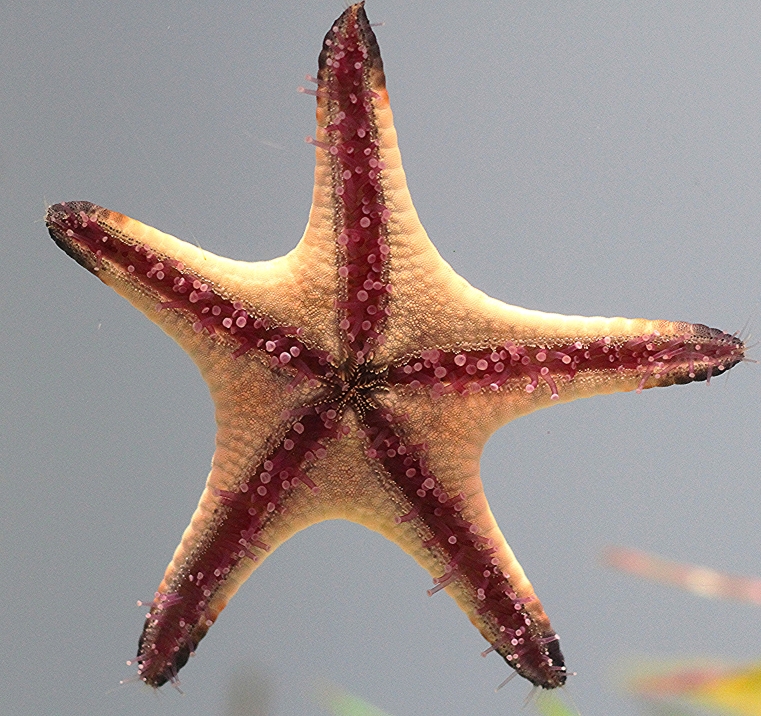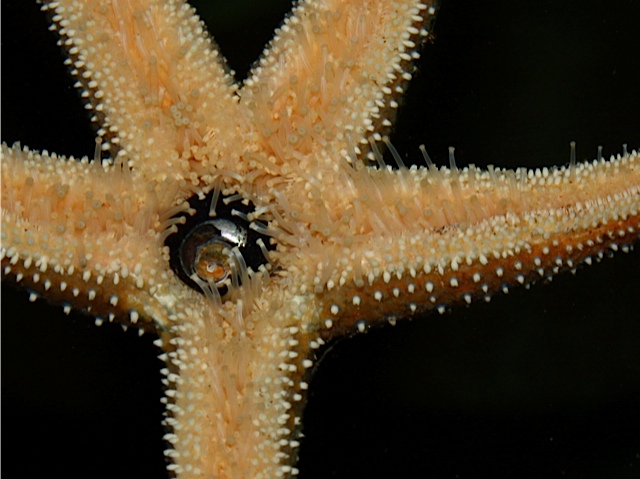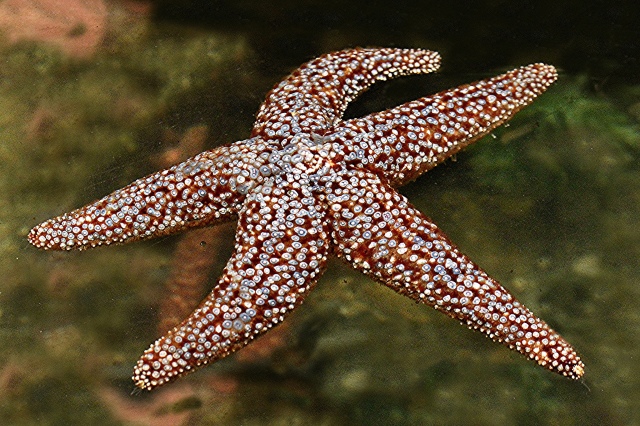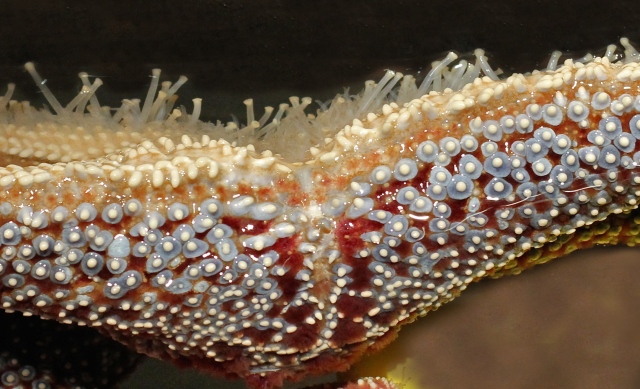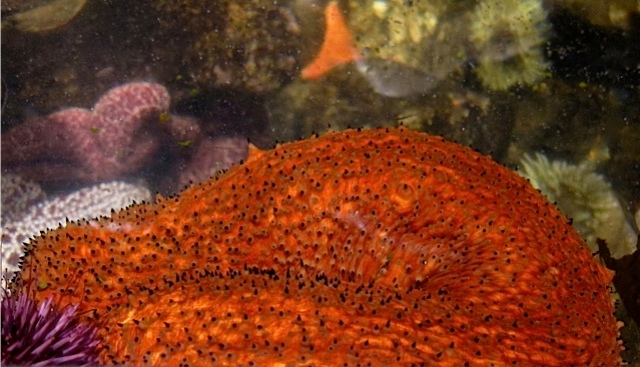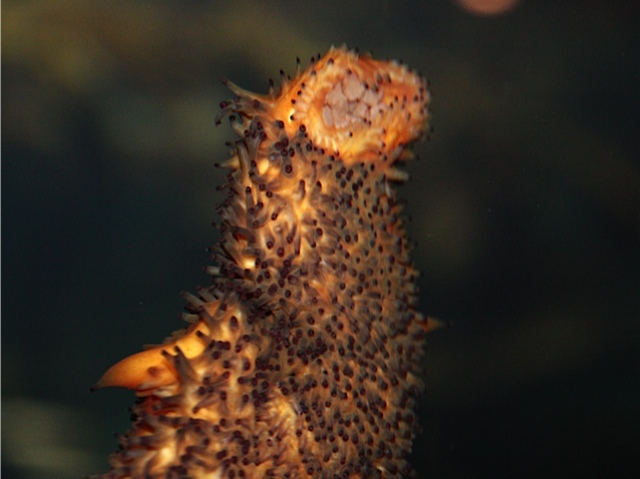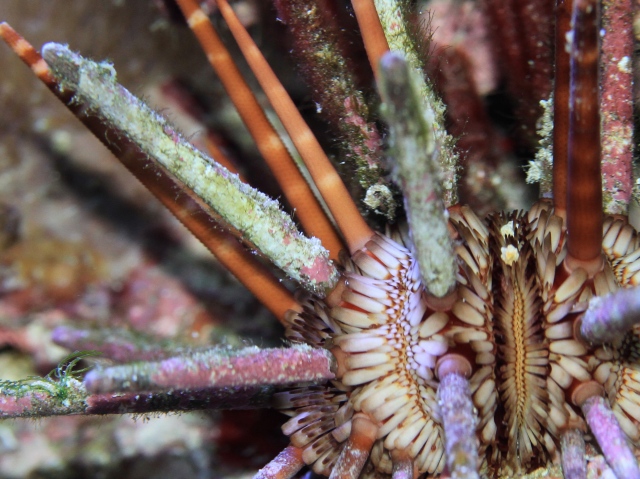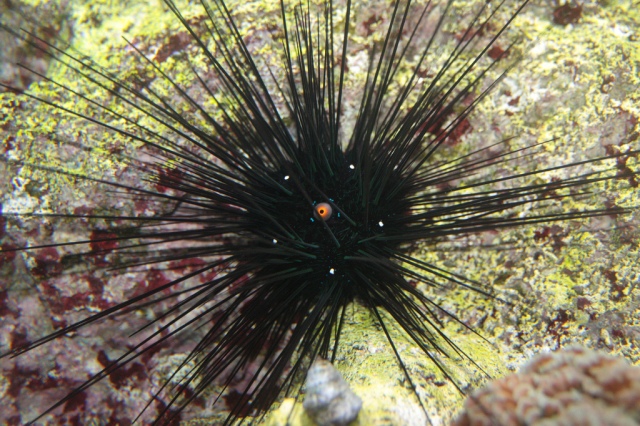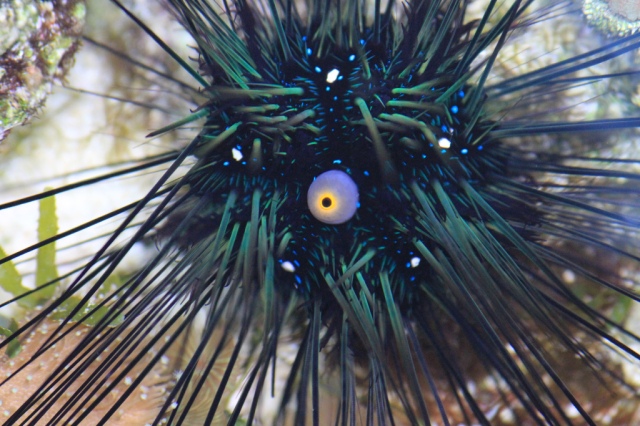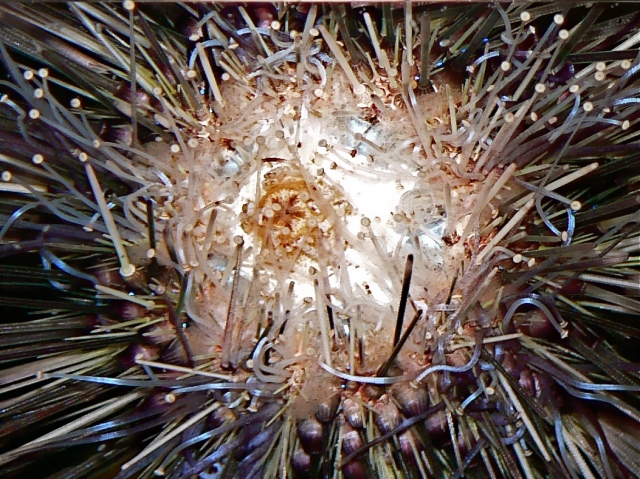TAXONOMY
Kingdom: Animalia
Phylum: Echinodermata
Class: Asteroidea
Order: Valvatida
Family: Oreasteridae
Genus/species: Protoreaster nodosus
GENERAL CHARACTERISTICS: The backround body color is highly variable; may be beige, brown, orange, red or other hues, such as green or blue. Horn-shaped tall dark nodules are conical and arranged in a single row, radially on the dorsal (top) side. Most horned sea stars found are a roughly rigid five-pointed star-shape (occasionally 4 or 6) with tapering arms. A sea star’s skeleton is made up of many calcium carbonate plates (ossicles) that move like flexible joints. (In sea urchins and sand dollars, their skeletal plates are fused). The Seastar skeleton is covered with a spiny skin.
Diameter up to 30 cm (12 in).
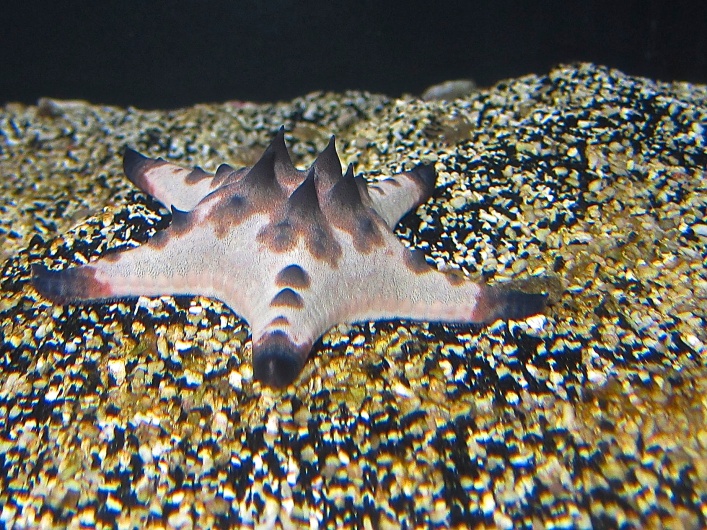
DISTRIBUTION/HABITAT: Red Sea, Indian and western Pacific oceans. Found in shallow sheltered sand and seagrass beds. Depth range 1 – 582 m (3.3 – 1900 feet).
DIET IN THE WILD: The mouth is located ventrally (bottom). The Chocolate Chip Seastar covers its food, then pushes out its stomach from inside its body of prey. Sea stars have a unique adaptation for consuming bi-valve mollusks (oysters, clams, mussels, etc.). Stars insert a portion of their stomach into the small “gape” between the valves of a mollusk. Stomach enzymes are released and digest the fleshy part of the mollusk inside its own shell. The digested contents are moved back into the sea star leaving an empty bi-valve shell. P. nodosus prefers sponges, corals, clams and snails, other invertebrates; also opportunistic carrion feeders.
REPRODUCTION: P. nodosus is a broadcast spawner. As in other sea stars, fertilization is external. Eggs and sperm are stored in the rays and released simultaneously. Larvae look nothing like the adults. The form that first hatches from the eggs is bilaterally symmetrical and planktonic. Larvae eventually settle and transform into tiny sea stars.
Lifespan up to 17 years
PREDATORS: Triggerfish, pufferfish, boxfish and parrotfish.
CONSERVATION: IUCN Not Evaluated

REMARKS: The Chocolate Chip Seastars are also called “knobbly sea star” and the “horned sea star.”
The chocolate chip sea star can regenerate lost limbs, as long as the central disk of the body is intact. Some species can regenerate an entire body from an arm or arm segment.
References
California Academy of Sciences Steinhart Aquarium Mangrove Pop-Up, Main floor (level one) 2018
Ron’s WordPress shortlink wp.me/p1DZ4b-1ml
Ron’s flickr https://www.flickr.com/photos/cas_docents/15010829781/in/set-72157608501343477/
Woods Hole www.whoi.edu/science/B/people/kamaral/SeaStar.html
Bishop Museum hbs.bishopmuseum.org/pubs-online/pdf/op11-8.pdf
Georgia Aquarium http://www.georgiaaquarium.org/animal-guide/georgia-aquarium/home/galleries/aquanaut-adventure/gallery-animals/chocolate-chip-sea-star
Reef Creature Identification, Humann and Deloach 2010, page 426
Encyclopedia of Life eol.org/pages/4704956/details
Marine Biology http://link.springer.com/article/10.1007%2Fs00227-008-1064-2



